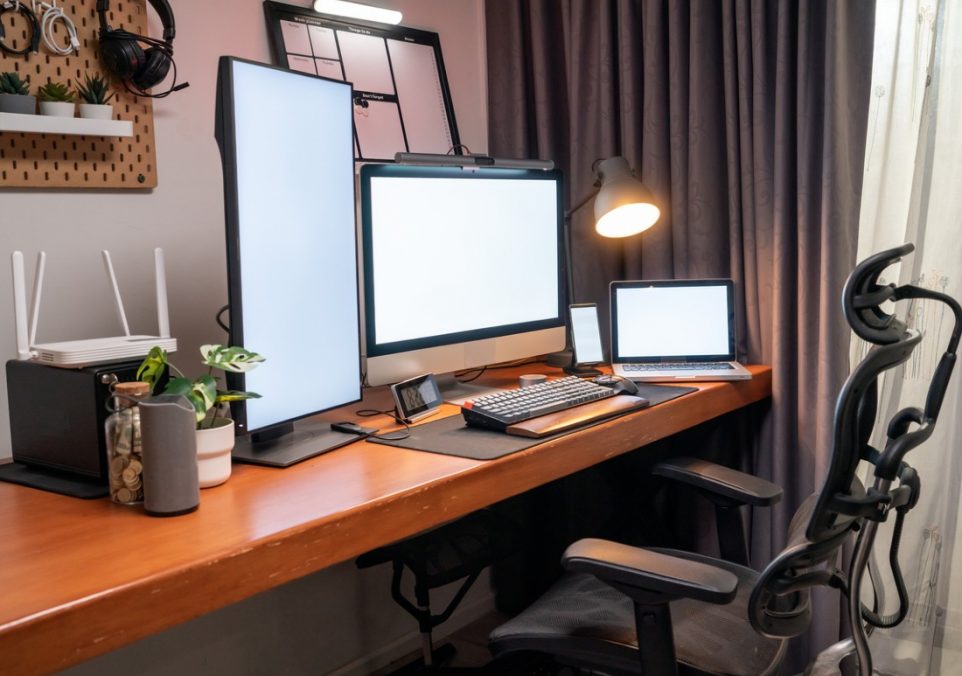How to Add a Second Monitor to Your Setup

Cramming multiple windows and shuffling through apps on a single desktop is quite frustrating. Splitting up your desktop onto dual monitors is a major life hack to work smart in the smarter times. Yes! All those ports at the back of your computer weren’t for nothing. It is time to whip up the cables and expand your system with a second monitor for better work experience and strategic division.
Read this article if you wish to learn how to connect a second computer monitor with your PC setup.
Easy Second Monitor Setup Guideline
This guide will help you set up a dual monitor system in no time. Here are all the steps discussed in detail:
Check if Your Computer Supports a Secondary Monitor
Windows 7, 8, and 10 accept dual monitors, but you need to ensure that the video card on your desktop and laptop has the right ports to allow such computing. It is an easy task to check out any PC’s video card and look up appropriate video output connections.
How to Find a Video Card on a Desktop
Look at the back of your desktop or on its inferior bottom panel, and check for idle ports of any type. If there is a video port apart from the one occupied by the cable linking your pc to the primary monitor, then you can easily connect to another monitor.
How to Check for a Video Card on a Laptop
Check onto your laptop’s side panel for video output ports. Every laptop with this accessory can support a secondary monitor.
A Step-By-Step Guide to Connecting the Second Monitor
After getting through the planning and cross-checking prior to dual monitor setup, follow the easy breakdown of steps given below for a successful desktop split up. Note that the following directions are exclusive to Windows 7, 8, and 10.
Step 1: Setup Physical Connections
It is essential to check out the video port and decide on the cable that mutually supports both monitors. Usually, older monitors support VGA and DVI, while the recent models accept HDMI cables.
Coming down to the right cable shouldn’t be difficult as each cable has a complementing port on the video card. The HDMI cable has its own mini and micro variants widely accepted on recent models and are readily available.
Overall, linking up monitors is not difficult, but modern display ports and USB-C incorporation have added another category of cables to the system. These modern USB-C cables are fast, easy to find, and have a mini type on one end and standard on the other, thus being multi-purpose and efficient at the same time.
Step 2: Configuring the Second Monitor on Windows
With the monitor connected to your computer, the next move is to get your pc to recognize the second monitor.
Windows 10
Windows 10 users simply have to proceed to “Windows settings” and select the “system” option. When in the system, you should click on “display” and press “detect,” where it shows monitors 1 and 2 pictorially. You can also click on the “identify” option and clarify which monitor is labeled as 1 & 2.
Windows 7 and 8
Although this is a similar procedure, there are minor differences with each Windows version. On Win-7 and 8, you have to first open the “control panel” and then click on “appearance and personalization.”
After this step, click open “display” and move on to “adjust screen resolution.” With these routes completed, you have to again “detect” and “identify” the second monitor.
Step 3: Decide Your Second Computer’s Status
According to the options provided by Windows, you can spread your desktop on both monitors, mirror it, or stick to one at a time.
You have to scroll to the bottom of the display setting that you arrived at earlier to identify the second monitor and see options under “multiple displays.”
From here on, the options are self-explanatory, and the mode selection is up to you. You can always use the “revert” option to control-z the changes you made.
Bottom Line
Setting up dual monitors isn’t as difficult as it might seem. Whether you are tech-savvy or not, just work up your cables right, and you’re done with the setup! (Recent Windows versions are programmed to detect the newly added monitor automatically.)
Your Trust, Our Core Commitment
At Rising Tech, earning and maintaining your trust is the cornerstone of our mission. We're dedicated to transparency, impartiality, and the relentless pursuit of truth in every article, review, and recommendation we publish. Our commitment to these principles ensures that you, our valued reader, are always equipped with reliable and unbiased information. Let us be your trusted guide in the ever-evolving world of technology.